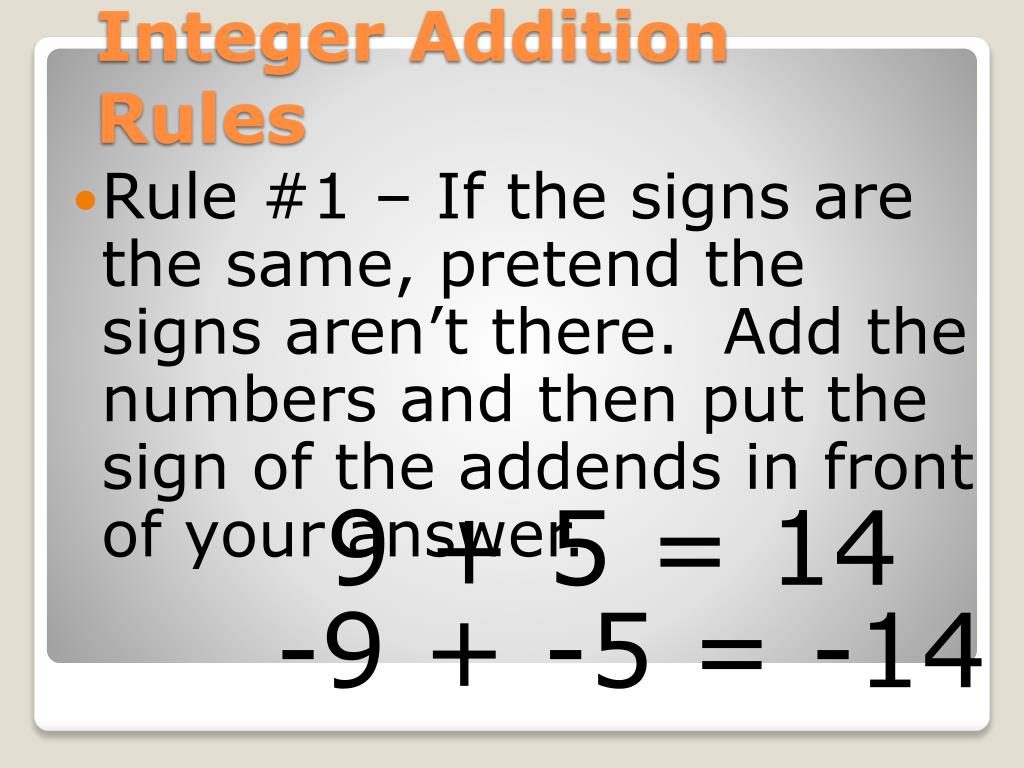

Closure Property of Multiplication of Integers Let's understand each property in relation to the division and multiplication of integers in detail.

Properties related to multiplication and division of integers are listed below: There are a few properties associated with the multiplication and division of integers. Multiplication and division of integers properties help us to identify the relationship between two or more integers when they are linked by multiplication or division operation between them. Properties of Multiplication and Division of Integers When the signs are the same, the answer is always positive.When the signs are different, the answer is always negative.To sum it all up and to make everything easy, the two most important things to remember when you are multiplying integers or dividing integers are: The following table will help you remember rules for dividing integers: Types of Integers When you divide integers with one negative sign and one positive sign, Negative ÷ Positive = Negative → –16 ÷ 8 = –2. When you divide integers with two negative signs, Negative ÷ Negative = Positive → –16 ÷ –8 = 2. When you divide integers with two positive signs, Positive ÷ Positive = Positive → 16 ÷ 8 = 2. Dividing 1 positive and 1 negative number.Just like multiplication, the division of integers also involves the same cases. It includes both positive numbers and negative numbers. According to the multiplication of integer rule, if a negative number is multiplied with a positive number, then the product is a negative number.ĭivision of integers involves the grouping of items. Step 3: Determine the sign of the product according to the multiplication of integers rules. Step 2: Find the product of the absolute value numbers 7 and 8. Step 1: Determine the absolute value of - 7 and 8. Let us look at an example to understand the steps better. Step 3: Once the product is obtained, determine the sign of the number according to the rules or conditions.Step 2: Find the product of the absolute values.Step 1: Determine the absolute value of the numbers.Let us look at the steps for multiplying integers. However, since integers deal with both negative and positive numbers, we have certain rules or conditions to remember while multiplying integers as we saw in the previous section. Multiplication of integers is very similar to normal multiplication. Multiplication of Integers Rules and Steps How many cookies does she eat in 5 days? ⇒ 5 × 4 = 20 cookies. The following table will help you remember rules for multiplying integers: Types of IntegersĮxample: Anna eats 4 cookies per day. When you multiply integers with one negative sign and one positive sign, Negative x Positive = Negative = –2 × 5 = –10. When you multiply integers with two negative signs, Negative x Negative = Positive = –2 × –3 = 6. When you multiply integers with two positive signs, Positive x Positive = Positive = 2 × 5 = 10. Multiplying 1 positive and 1 negative number.When we come to the case multiplication of integers, the following cases must be taken into account: Multiplication of integers is the process of repetitive addition including positive and negative numbers or we can simply say integers.


 0 kommentar(er)
0 kommentar(er)
